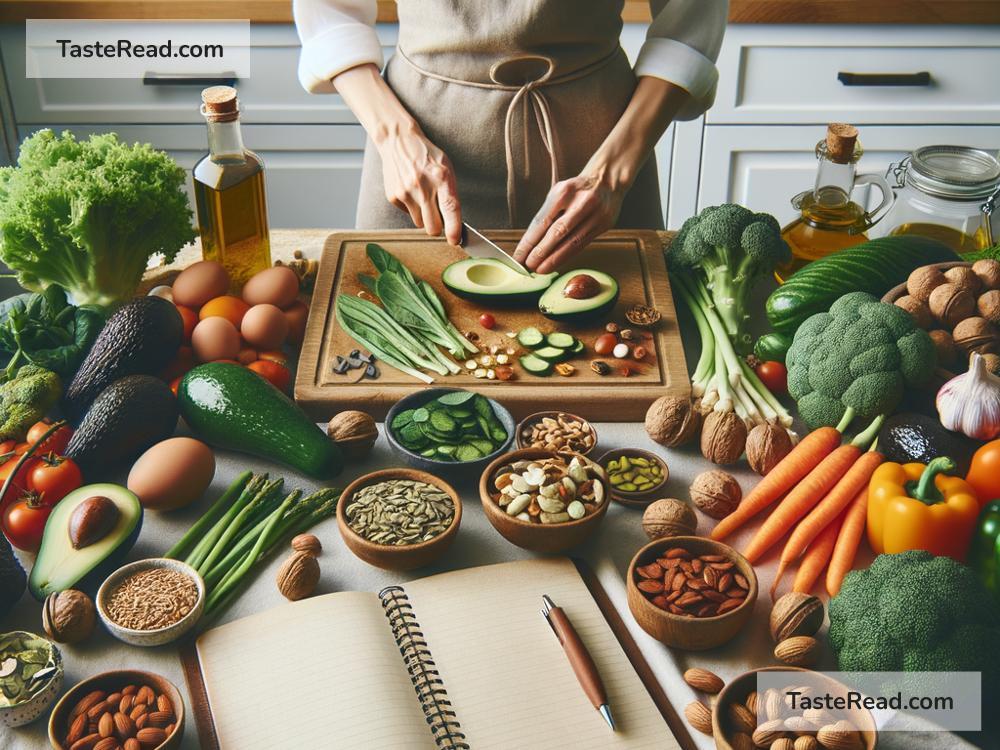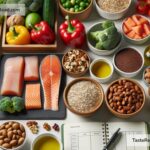How to Plan Meals for Optimal Campesterol Intake
If you’ve heard about campesterol and wondered how it fits into your diet, you’re not alone! Campesterol is a type of plant sterol, or phytosterol, found naturally in fruits, vegetables, nuts, and seeds. It’s known for its potential health benefits, especially in supporting heart health and lowering blood cholesterol levels. Planning meals rich in campesterol can be an easy and tasty way to boost your wellness. In this article, we’ll break down how to incorporate campesterol into your diet step by step, using simple and practical tips anyone can follow.
Why Campesterol is Important
Before diving into meal planning, let’s talk about why campesterol matters. Plant sterols like campesterol have a structure similar to cholesterol, but they actually help reduce the amount of bad cholesterol (LDL cholesterol) in your bloodstream. They do this by blocking cholesterol absorption in your gut. Including more campesterol-rich foods in your meals can improve heart health and potentially lower your risk of heart-related illnesses.
Campesterol is also found in foods that are naturally high in fiber, vitamins, and antioxidants, making it a solid choice for people who want an overall healthier lifestyle.
Step 1: Get Familiar with Campesterol-Rich Foods
Knowing where campesterol comes from is the first step to meal planning. Foods high in campesterol include:
- Vegetables: Broccoli, cauliflower, spinach, and Brussels sprouts are excellent choices.
- Fruits: Oranges, berries, and avocados are good sources.
- Nuts and Seeds: Almonds, pistachios, flaxseeds, and sunflower seeds contain campesterol.
- Legumes: Beans, lentils, and peas are rich in plant sterols.
- Plant-Based Oils: Vegetable oils such as avocado oil and olive oil also provide campesterol.
These foods are widely available, so adding them to your grocery list will be easy.
Step 2: Create a Balanced Meal Plan
The trick to optimal campesterol intake is to balance your meals with a variety of foods. Campesterol works best when it’s part of an overall healthy diet. Here’s how to plan:
Breakfast
A strong start to the day can set the tone. Try campesterol-rich meals like:
– Smoothie Bowl: Blend spinach, avocado, and a banana with almond milk, then top with flaxseeds and berries.
– Avocado Toast: Spread mashed avocado on whole-grain toast and sprinkle sunflower seeds on top.
– Oatmeal: Prepare oatmeal and mix in chia seeds, nuts, and a handful of fresh raspberries or strawberries.
Lunch
Keep lunch light but nutritious with campesterol-packed foods:
– Vegetable Stir-Fry: Toss broccoli, Brussels sprouts, and peppers in olive oil. Serve over quinoa or brown rice.
– Lentil Soup: A hearty lentil soup with spinach, carrots, and celery can be satisfying and heart-healthy.
– Salad: Build a colorful salad with spinach, kale, avocado, almonds, and sunflower seeds. Drizzle with olive oil or a citrus-based dressing.
Snack
You can make sure you’re meeting your campesterol needs by snacking smartly:
– A handful of nuts (like pistachios or almonds) or seeds (like flaxseeds).
– Fresh fruit like an orange or sliced strawberries.
– Veggie sticks with hummus made from beans or peas.
Dinner
Dinner is a great time to combine similar foods in a wholesome way:
– Grilled Veggie Bowl: Roast cauliflower, zucchini, and sweet potatoes with olive oil and serve them alongside lentils.
– Bean and Avocado Tacos: Use black beans, mashed avocado, shredded lettuce, and diced tomatoes in whole-grain tortillas.
– Stuffed Bell Peppers: Fill red or green peppers with quinoa, spinach, black beans, and sunflower seeds, then bake them in the oven.
Dessert
Who says you can’t enjoy dessert while being healthy? Try:
– Fruit Salad: Combine oranges, berries, and kiwi for a refreshing treat.
– Chia Pudding: Make pudding with almond milk, chia seeds, and a drizzle of honey.
Step 3: Pay Attention to Serving Sizes
Moderation is key in meal planning. While campesterol-rich foods are healthy, eating them in overly large portions can overload your digestive system. Stick to balanced servings:
– 1 handful of nuts or seeds,
– 1 cup of cooked vegetables or legumes,
– 1 medium-sized fruit,
– 2 tablespoons of olive or avocado oil for cooking or dressings.
Step 4: Pair Campesterol Foods with Fiber and Protein
Campesterol doesn’t work alone. It’s most effective when combined with high-fiber foods and lean protein. Fiber aids digestion and cholesterol reduction, while protein keeps you full longer. For example, pair lentils or beans with spinach for fiber and avocado or almonds for protein.
Step 5: Cook Smart
How you prepare your meals matters. Opt for simple cooking methods like steaming, roasting, or grilling, which maintain the nutrients in campesterol-rich foods. Avoid deep frying or using heavy sauces that can sabotage your healthy meal.
Step 6: Make It Fun
Healthy eating doesn’t have to be boring! Experiment with new recipes, try different cuisines, and play with colorful ingredients. For example, make Mediterranean-inspired dishes with olive oil, roasted veggies, and lentil hummus, or whip up a Mexican-inspired meal with avocado, beans, and whole-grain tortillas.
Conclusion
Planning meals for optimal campesterol intake is easier than it sounds. By incorporating fruits, vegetables, nuts, seeds, legumes, and plant-based oils into your diet, you can enjoy delicious meals while boosting your health. Focus on variety and balance, pair campesterol foods with fiber and protein, and choose simple cooking methods to retain nutrients. Whether you’re making a smoothie for breakfast or grilling veggies for dinner, these tips will help you stay on track toward a healthier, heart-friendly lifestyle. Happy eating!


